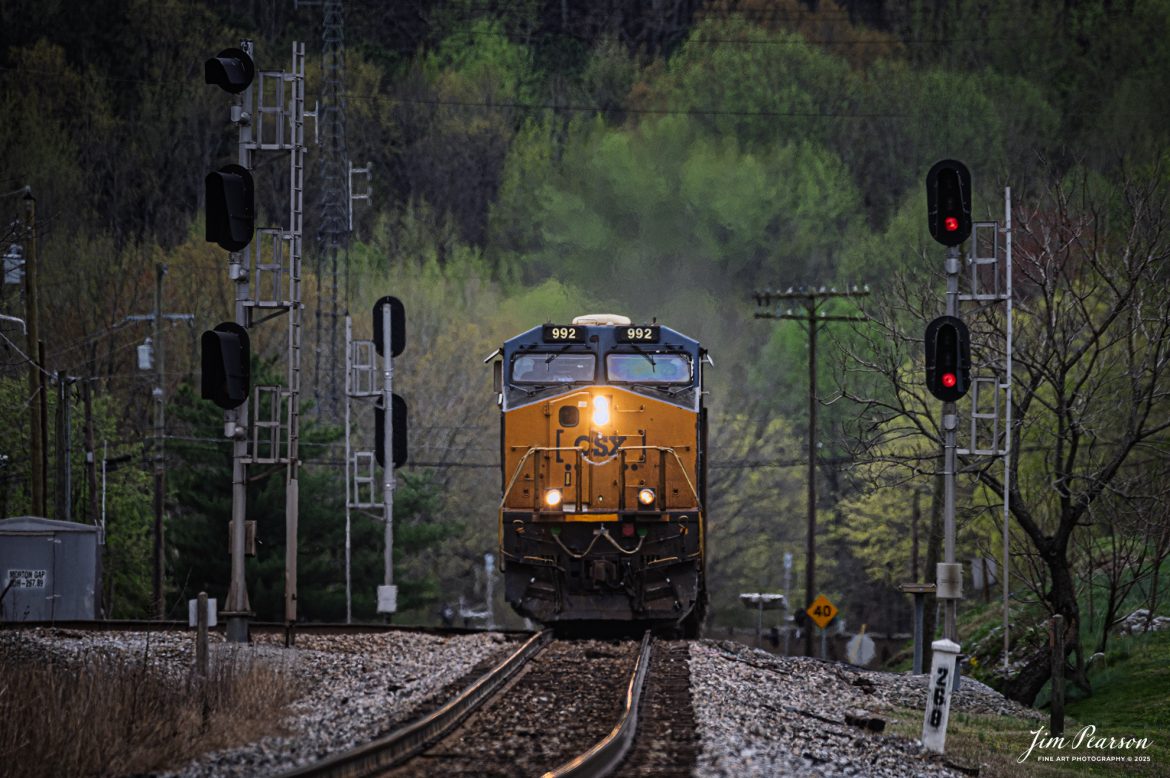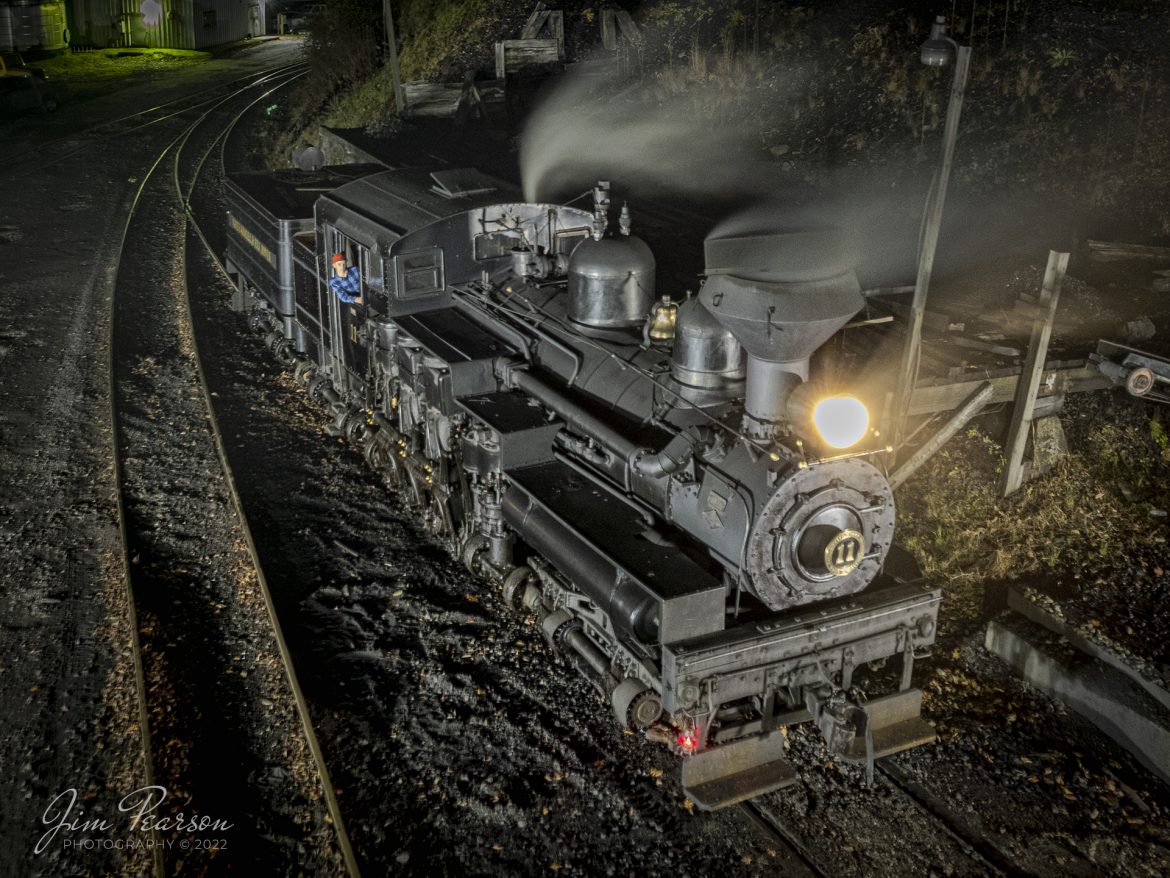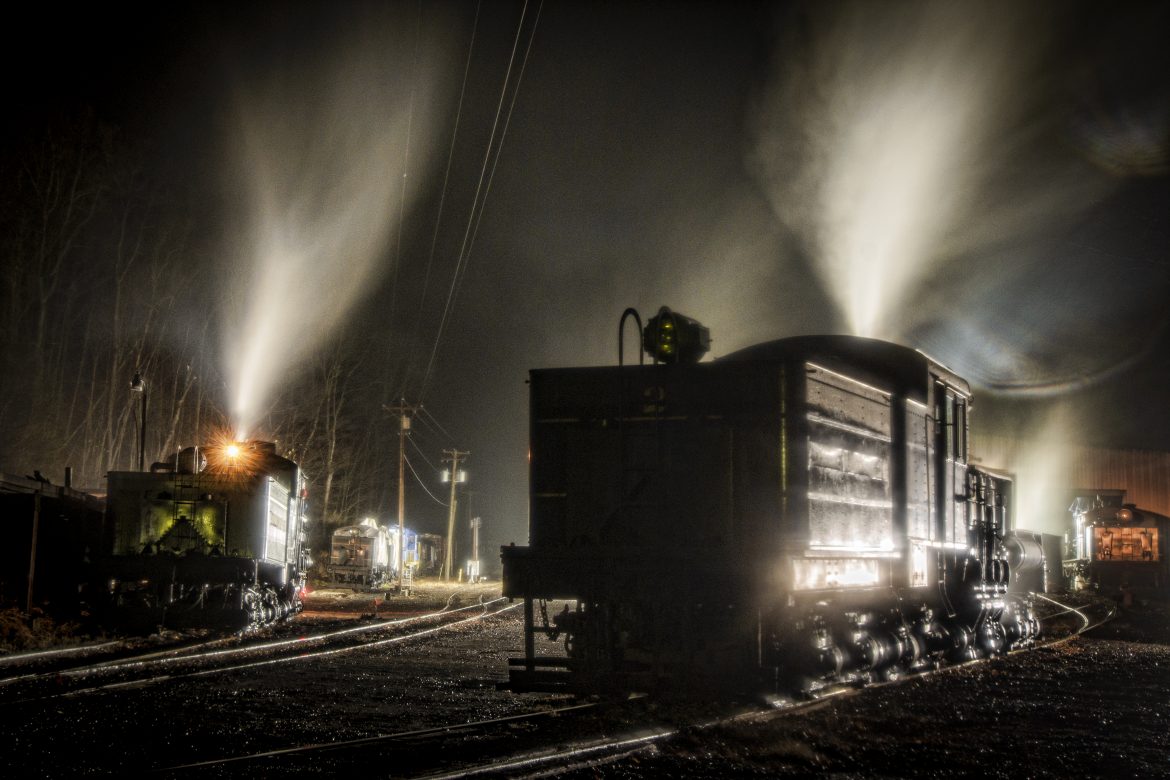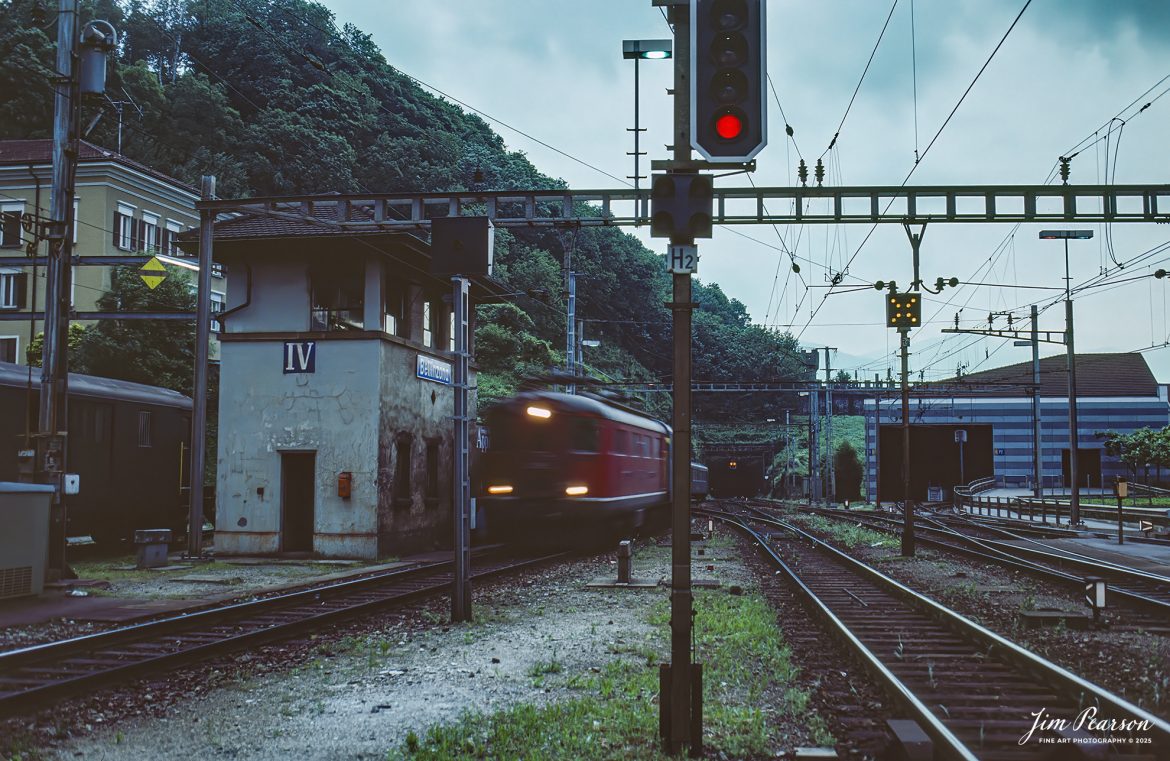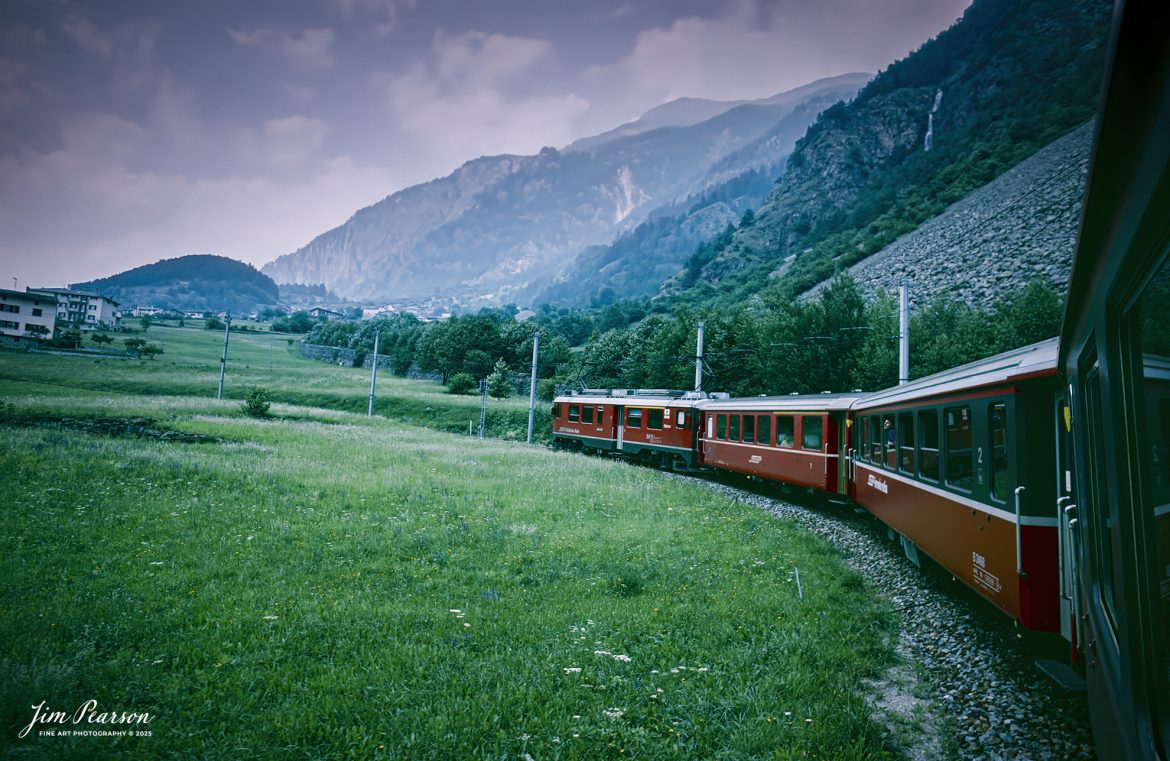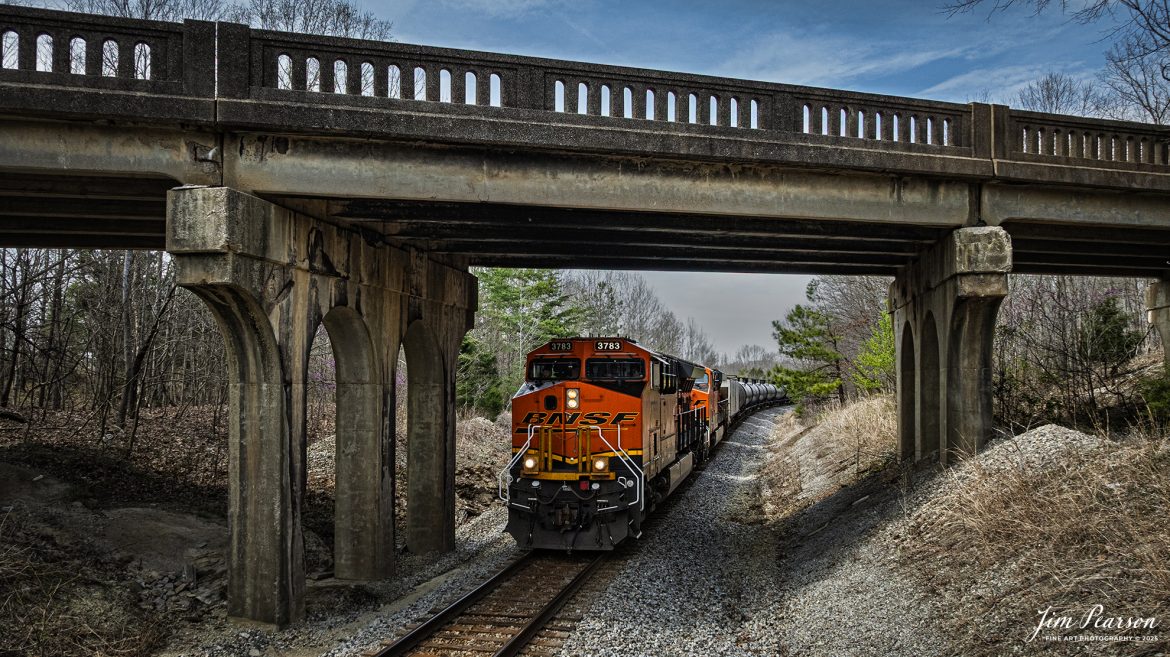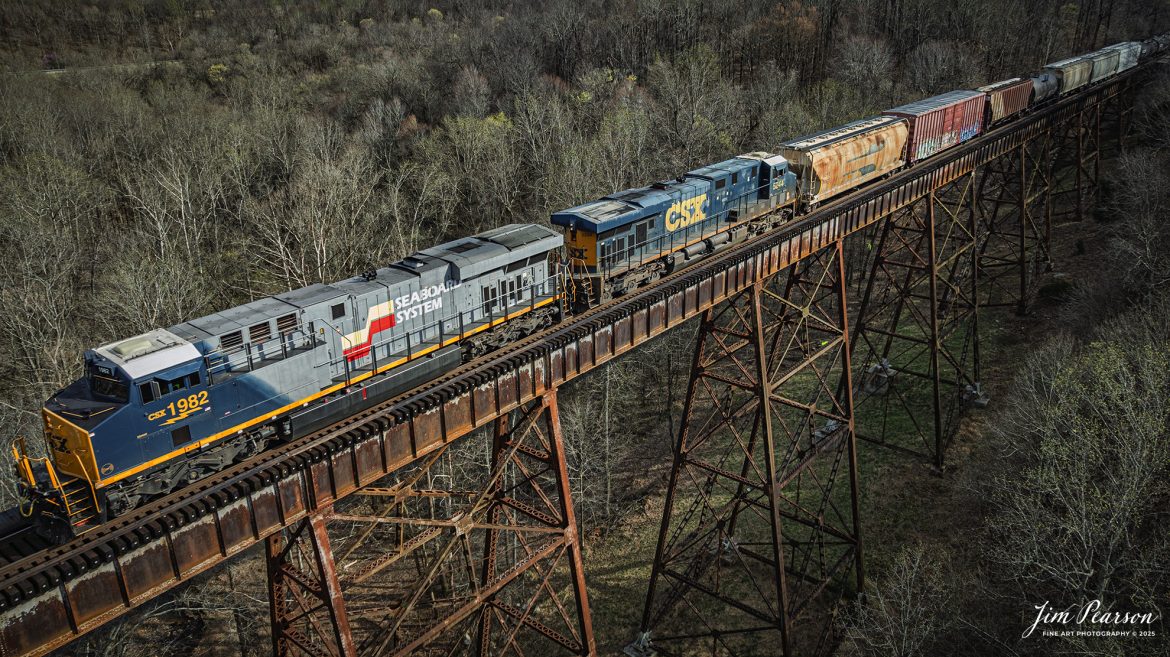In this week’s video I’m taking you on a tour of some of my favorite spots to railfan on the Paducah and Louisville Railway between Madisonville and Cecilia, Ky. Sit back, turn up the sound, expand to full screen and enjoy the trains!! Please like, share, subscribe and thanks for watching!
CSXT 992 pulls through Mortons Junction as it leads CSX E302 at Mortons Gap, Ky
CSXT 992 pulls through Mortons Junction as it leads CSX E302, empty coal train, northbound bound at Mortons Gap, Kentucky, on the CSX Henderson Subdivision, on March 31st, 2025, with a hint of spring in the trees.
Tech Info: Nikon Z6ii, RAW, Sigma 150-600 @ 550mm, f6.3, 1/1250, ISO 800.
CSXT 3269 takes the main from the cutoff at Mortons Junction as it leads CSX M513
CSXT 3269 takes the main from the cutoff at Mortons Junction as it leads CSX M513 southbound at Mortons Gap, Kentucky, on the CSX Henderson Subdivision, on March 31st, 2025.
Tech Info: Nikon Z6ii, RAW, Sigma 150-600 @ 440mm, f6, 1/1250, ISO 400.
Cass Scenic Railway Shay locomotive number 11, (C-90-3) sits outside the engine house at Cass, WV
Cass Scenic Railway Shay locomotive number 11, (C-90-3) sits outside the engine house during the Rail Heritage Photography Weekend night photo shoot at Cass, West Virginia on November 5th, 2022.
According to Wikipedia: Cass Scenic Railroad, is an 11-mile (18 km) long heritage railway owned by the West Virginia State Rail Authority and operated by the Durbin and Greenbrier Valley Railroad. The park also includes the former company town of Cass and a portion of the summit of Bald Knob, the highest point on Back Allegheny Mountain.
Founded in 1901 by the West Virginia Pulp and Paper Company (now WestRock), Cass was built as a company town to serve the needs of the men who worked in the nearby mountains cutting spruce and hemlock for the West Virginia Spruce Lumber Company, a subsidiary of WVP&P. At one time, the sawmill at Cass was the largest double-band sawmill in the world. It processed an estimated 1.25 billion board feet (104,000,000 cu ft; 2,950,000 m3) of lumber during its lifetime. In 1901 work started on the 4 ft 8+1⁄2 in (1,435 mm) standard gauge railroad, which climbs Back Allegheny Mountain.
The railroad eventually reached a meadow area, now known as Whittaker Station, where a logging camp was established for the immigrants who were building the railroad. The railroad soon reached the top of Gobblers Knob, and then a location on top of the mountain known as ‘Spruce’. The railroad built a small town at that location, complete with a company store, houses, a hotel, and a doctor’s office. Work soon commenced on logging the red spruce trees, which grew in the higher elevations.
Tech Info: DJI Mavic Air 2S Drone, 22mm, f/2.8, 3sec exposure, +0.3 stops, ISO 200.
Cass Scenic Railway Shay locomotives 2, (C-80-3), and 11, (C-90-3) sit outside the engine house during a light rain
Cass Scenic Railway Shay locomotives 2, (C-80-3), and 11, (C-90-3) sit outside the engine house during a light rain, at the Rail Heritage Photography Weekend, at Cass, West Virginia on the night of November 5th, 2022.
According to Wikipedia: Cass Scenic Railroad, is an 11-mile (18 km) long heritage railway owned by the West Virginia State Rail Authority and operated by the Durbin and Greenbrier Valley Railroad. The park also includes the former company town of Cass and a portion of the summit of Bald Knob, the highest point on Back Allegheny Mountain.
Founded in 1901 by the West Virginia Pulp and Paper Company (now WestRock), Cass was built as a company town to serve the needs of the men who worked in the nearby mountains cutting spruce and hemlock for the West Virginia Spruce Lumber Company, a subsidiary of WVP&P. At one time, the sawmill at Cass was the largest double-band sawmill in the world. It processed an estimated 1.25 billion board feet (104,000,000 cu ft; 2,950,000 m3) of lumber during its lifetime. In 1901 work started on the 4 ft 8+1⁄2 in (1,435 mm) standard gauge railroad, which climbs Back Allegheny Mountain.
The railroad eventually reached a meadow area, now known as Whittaker Station, where a logging camp was established for the immigrants who were building the railroad. The railroad soon reached the top of Gobblers Knob, and then a location on top of the mountain known as ‘Spruce’. The railroad built a small town at that location, complete with a company store, houses, a hotel, and a doctor’s office. Work soon commenced on logging the red spruce trees, which grew in the higher elevations.
Tech Info: Nikon D800, RAW, Nikon 10-24mm @ 24mm, f/9, 30 seconds, ISO 100.
Film Wednesday – 1993 – Today’s slide scan is of a train arriving at the station in Bellinzona, Switzerland
Film Wednesday – 1993 – Today’s slide scan is from a trip I took between Aviano, Italy and Zermatt, Switzerland. Here I caught a train arriving at the station in Bellinzona, Switzerland on my way to Zermatt.
Tech Info: Camera, Nikon F3, Kodachrome Slide Film, no other data recorded, Scanned with a PlusTek 82001i Film Scanner.
Film Wednesday – 1993 – Today’s slide scan is from a trip I took between Aviano, Italy and Zermatt, Switzerland
Film Wednesday – 1993 – Today’s slide scan is from a trip I took between Aviano, Italy and Zermatt, Switzerland. This was done from my window on the Glacier Express as we were headed to Zermatt.
I haven’t a clue exactly to the location where this train set was at and again If anyone recognizes this location, let me know in the comments.
According to Wikipedia: The Glacier Express is a direct Panorama Express (PE) train connecting railway stations of the two major mountain resorts of Zermatt and St. Moritz via Andermatt in the central Swiss Alps. The train provides a one-seat ride for an 8-hour end-to-end 291-kilometre (181 mi) journey, and omits stops made by local trains. The Glacier Express has been called the ‘slowest express train in the world’. As St. Moritz and Zermatt are home to two well-known mountains, the Glacier Express is also said to travel from Matterhorn to Piz Bernina.
Tech Info: Camera, Nikon F3, Kodachrome Slide Film, no other data recorded, Scanned with a PlusTek 82001i Film Scanner.
BNSF 3783 leads loaded ethanol train B797 as they pass under the highway 41 overpass at Mannington, Kentucky
BNSF 3783 leads loaded ethanol train B797 as they pass under the highway 41 overpass at Mannington, Kentucky on March 28th, 2025, on the CSX Henderson Subdivision as it heads south.
Tech Info: DJI Mavic 3 Classic Drone, RAW, 22mm, f/2.8, 1/1622, ISO 200.
Seaboard System Heritage Unit leading CSX M500 north across Gum Lick Trestle at Kelly, Kentucky
This is the shot that almost wasn’t! One of the critical things about drone photography is timing and sometimes it doesn’t go as planned! When I pressed the shutter for this photo the Seaboard System unit was places where the nose of the trailing unit is at.
There’s always a delay between the time you shoot the picture unit the drone receives the signal to shoot, and that difference always seems to depend on distance and lay of the land.
I always have my drone set to do a burst of 7 images and normally the one of the shots are right where I want it. In this shot of the Seaboard System Heritage Unit leading CSX M500 north across Gum Lick Trestle at Kelly, Kentucky, on March 28th, 2025, on the CSX Henderson Subdivision; this is the first image on the drone. All the other six, after it the engine was cut off! It’s a bit tighter than I like but it works.
Tech Info: DJI Mavic 3 Classic Drone, RAW, 22mm, f/2.8, 1/1250, ISO 120.
CSXT 8845 heads up CSX W053 as they pull north through the siding with a weed sprayer train at Slaughters, Kentucky
CSXT 8845 heads up CSX W053 as they pull north through the siding with a weed sprayer train at Slaughters, Kentucky as they meet southbound grain train G407, on March 26th, 2025, on the CSX Henderson Subdivision.
Tech Info: DJI Mavic 3 Classic Drone, RAW, 22mm, f/2.8, 1/3200, ISO 110.
CSXT 3242 passes a long string of maintenance of way equipment in the house track at Hanson, Kentucky
CSXT 3242 passes a long string of maintenance of way equipment in the house track at Hanson, Kentucky on March 26th, 2025, on the CSX Henderson Subdivision as it heads north with empty coal train E320.
Tech Info: DJI Mavic 3 Classic Drone, RAW, 22mm, f/2.8, 1/2000, ISO 340.
CSX E040 crosses over the Red River at Adams, TN with CSXT 4742 leading
CSX E040 crosses over the Red River at Adams, TN with CSXT 4742 leading a combined empty coal and ethanol train (B622) on March 18th, 2025, on the CSX Henderson Subdivision.
Tech Info: DJI Mavic 3 Classic Drone, RAW, 22mm, f/2.8, 1/2000, ISO 100.
CSX I025 with CSX NC&SL Heritage Unit 1851 leading, heads south into the S curve at Nortonville, Ky
CSX I025 with CSX NC&SL Heritage Unit 1851 leading, heads south into the S curve at Nortonville, Ky, on the CSX Henderson Subdivision, on January 27th, 2025. This train typically runs with autoracks behind the power which contain Tesla’s bound for Florida.
According to a CSX Press Release: September 20, 2024 – Railroads have long played a crucial role in shaping the economic and cultural landscapes of the United States. Among these storied lines is the Nashville, Chattanooga, and St. Louis (NC&StL) Railway, a key player in the growth of the Southeast. CSX has unveiled its 19th heritage locomotive, a tribute to the NC&StL Railway, celebrating the rich legacy of a system integral to regional development.
Operating from 1851 to 1957, the NC&StL Railway was a vital freight and passenger route, connecting communities across Tennessee and other Southern states. It facilitated the movement of goods and people, boosting commerce and fostering community development along its routes. The railway’s strategic links between Nashville, Chattanooga, and St. Louis significantly contributed to the urban and industrial growth of these cities, supporting industries such as agriculture, coal, and manufacturing.
To honor the historical significance of the NC&StL Railway, CSX introduced the Nashville, Chattanooga, and St. Louis heritage locomotive. This initiative is part of CSX’s broader program to preserve the legacy of railroads that are now part of its extensive network. Each heritage unit is carefully crafted to pay homage to the unique identity and history of its predecessor, featuring colors and designs reminiscent of the original rail lines.
Tech Info: Nikon Z6ii Mirrorless, RAW, Sigma 150-600 @ 420mm, f/6, 1/2500, ISO 560.
CSX President’s Special southbound on the Henderson Subdivision at Rahm, Indiana
CSX President,s Passenger train P001 heads south up the viaduct approaching the bridge over the Ohio River at Henderson, Ky from Evansville, IN, with CSX Gevo units 3310, 3271 leading and CSXT 1 & 2 trailing as they pull 11 cars at a little over 1,000 ft long. Not sure, but I heard they had problems with PTC on CSXT 1 & 2 and that’s why they had to put the Gevos on the front on June 10th, 2021.
CSX has repainted two of its F40PH locomotives, to be used on its business train, into predecessor Baltimore & Ohio’s blue, gray, and black paint scheme. CSX1 is former 9998 (former Amtrak 288) and from what I can find out CSXT 2 is the former F40PH 9993 (former Amtrak 395) but can’t really confirm it for sure. The other F40s are expected to be painted in the same scheme in the coming months as they are cycled through the shops.
Tech Info: DJI Mavic Air 2 Drone, RAW, 4.5mm (24mm equivalent lens) f/2.8, 1/500, ISO 100.
Saturday Infrared photo, we catch Union pacific 7212 leading CSX M813 out of Mortons Gap, Kentucky
In this week’s Saturday Infrared photo, we catch Union pacific 7212 leading CSX M813 as it heads south out of Mortons Gap, Kentucky, on the CSX Henderson Subdivision, on March 18th, 2025.
Tech Info: Fuji XT-1, RAW, Converted to 720nm B&W IR, Nikon 70-300 @1006mm, f/5, 1/1000, ISO 400.
March 29th, 2025 – Episode 117 – Railfanning Paducah and Louisville Railway
Saturday Edited Video from Jim Pearson Photography In this week’s video I’m taking you on a tour of some of my favorite spots to railfan between Princeton and Madisonville, Ky on the Paducah and Louisville Railway.
Sit back, turn up the sound, expand to full screen and enjoy the trains!! Thanks for watching! Don’t forget to Subscribe and Ring the Notification Bell so you won’t miss any of my future videos! Have a blessed day everyone!!
CSX W053 weed sprayer train northbound at Madisonville, Kentucky on the CSX Henderson Subdivision
CSXT 8845 heads up CSX W053 as they work their way north under the North Main Street overpass with a weed spraying train at Madisonville, Kentucky on March 26th, 2025, on the CSX Henderson Subdivision.
Tech Info: DJI Mavic 3 Classic Drone, RAW, 22mm, f/2.8, 1/2500, ISO 160.
Union Pacific 9771 leads CSX S982 as the heads south out of Sebree, Kentucky with Brightline Cars
Union Pacific 9771 leads CSX S982 as the heads south out of Sebree, Kentucky as a set of five new passenger cars for Brightline in Florida on March 26th, 2025, on the CSX Henderson Subdivision, in the golden light of the setting sun.
Unfortunately, the last car in the consist has already been hit by a tagger somewhere along it’s run from California.
According to Wikipedia: Brightline is a privately run intercity rail route between Miami and West Palm Beach, Florida that runs on track owned by Florida East Coast Railway. An extension from West Palm Beach to Orlando International Airport was expected to open in 2023.
Brightline is the only privately owned and operated intercity passenger railroad in the United States. Its development started in March 2012 as All Aboard Florida by Florida East Coast Industries; a Florida real estate developer owned by Fortress Investment Group. Construction began in November 2014 and the route opened in January 2018.
Tech Info: DJI Mavic 3 Classic Drone, RAW, 22mm, f/2.8, 1/500, ISO 140.
LORAM Railgrinder 305 waits in the siding at Crofton, Kentucky as they wait on B211 to clear
LORAM Railgrinder 305 waits in the siding at Crofton, Kentucky as they wait on B211 to clear so they can continue to grind their way south on March 24th, 2025, on the CSX Henderson Subdivision.
According to Wikipedia: A railgrinder (or rail grinder) is a maintenance of way vehicle or train used to restore the profile and remove irregularities from worn tracks to extend its life and to improve the ride of trains using the track. Rail grinders were developed to increase the lifespan of the tracks being serviced for rail corrugation. Rail grinding is a process that is done to stop deformation due to use and friction on railroad tracks by removing deformations and corrosion.
Railroad tracks that experience continual use are more likely to experience corrugation and overall wear. Rail grinders are used to grind the tracks when rail corrugation is present, or before corrugation begins to form on the tracks. Major freight train tracks use rail grinders for track maintenance based on the interval of tonnage, rather than time.
Transit systems and subways in major cities continue to use scheduled rail grinding processes to combat the corrugation common to heavily used tracks. Rail-grinding equipment may be mounted on a single self-propelled vehicle or on a dedicated rail-grinding train which, when used on an extensive network, may include crew quarters. The grinding wheels, of which there may be more than 100, are set at controlled angles to restore the track to its correct profile.
Tech Info: DJI Mavic 3 Classic Drone, RAW, 22mm, f/2.8, 1/2000, ISO 140.
LORAM Railgrinder 305 heads south at Nortonville, Kentucky as they grind their way south
LORAM Railgrinder 305 heads south at Nortonville, Kentucky as they grind their way south on March 24th, 2025, on the CSX Henderson Subdivision.
According to Wikipedia: A railgrinder (or rail grinder) is a maintenance of way vehicle or train used to restore the profile and remove irregularities from worn tracks to extend its life and to improve the ride of trains using the track. Rail grinders were developed to increase the lifespan of the tracks being serviced for rail corrugation. Rail grinding is a process that is done to stop deformation due to use and friction on railroad tracks by removing deformations and corrosion.
Railroad tracks that experience continual use are more likely to experience corrugation and overall wear. Rail grinders are used to grind the tracks when rail corrugation is present, or before corrugation begins to form on the tracks. Major freight train tracks use rail grinders for track maintenance based on the interval of tonnage, rather than time.
Transit systems and subways in major cities continue to use scheduled rail grinding processes to combat the corrugation common to heavily used tracks. Rail-grinding equipment may be mounted on a single self-propelled vehicle or on a dedicated rail-grinding train which, when used on an extensive network, may include crew quarters. The grinding wheels, of which there may be more than 100, are set at controlled angles to restore the track to its correct profile.
Tech Info: DJI Mavic 3 Classic Drone, RAW, 22mm, f/2.8, 1/2000, ISO 120.
Film Wednesday – 1993 – Today’s slide scans are from a trip I took between Aviano, Italy and Zermatt, Switzerland
Film Wednesday – 1993 – Today’s slide scans are from a trip I took between Aviano, Italy and Zermatt, Switzerland. This image is from the section of the trip where I was on the Glacier Express that took me into Zermatt. I haven’t a clue exactly to the location where this commuter trainset was crossing over one of the many bridges that dot the landscape in this area. If anyone recognizes this location, let me know in the comments.
Got this from a follower: This is on the Centovalli-Bahn at Borgnone, Switzerland.
Tech Info: Camera, Nikon F3, Kodachrome Slide Film, no other data recorded, Scanned with a PlusTek 82001i Film Scanner.

